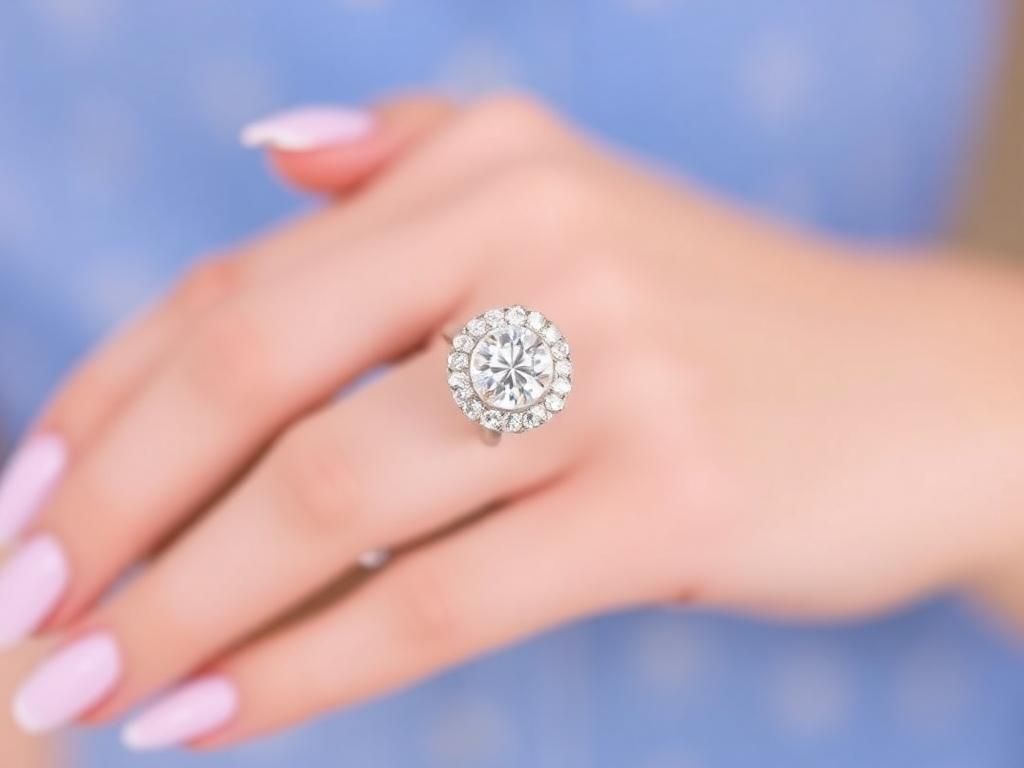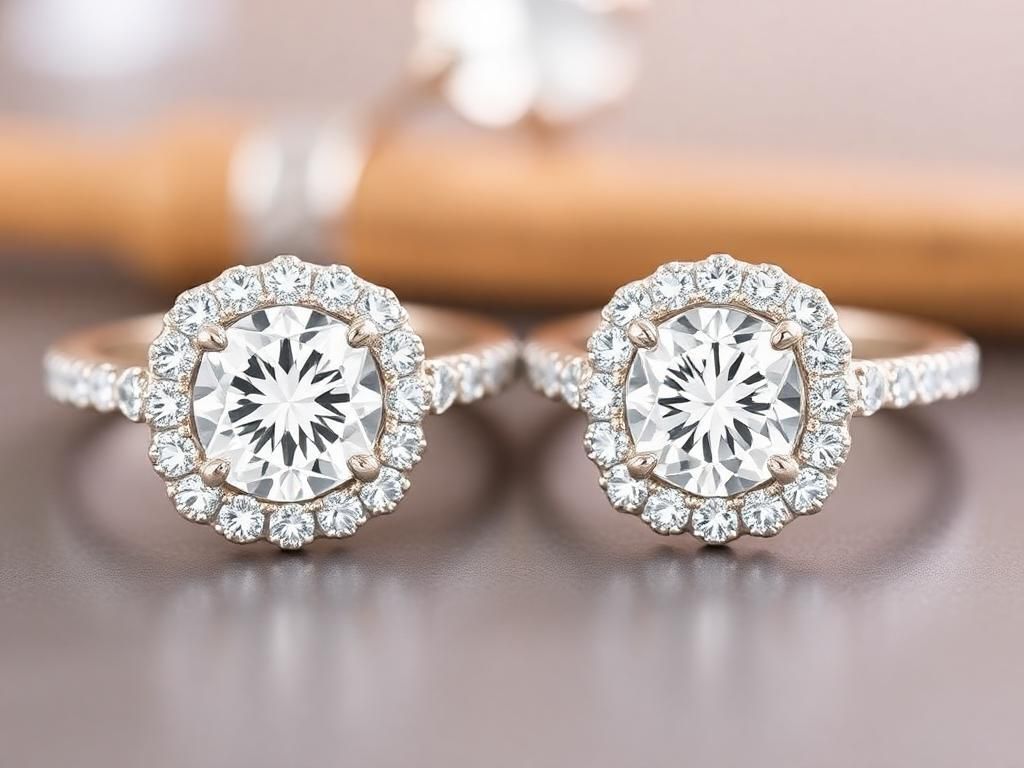Pave diamonds are a stunning example of artistry in jewelry design, captivating enthusiasts around the globe with their exquisite sparkle and intricate detailing. By understanding what pave diamonds are, you can appreciate their significance in the world of fine jewelry. The term “pave” originates from the French word for “paved,” which refers to the way small diamonds are set closely together to create a seamless surface of brilliance. This technique has deep roots, dating back to the 18th century, where artisans first developed the method to enhance the luminosity of diamonds.
Pave settings emerged as a groundbreaking way to showcase diamonds in all their glory, amplifying their brilliance while allowing for diverse design options. Today, pave diamonds are a vital component of engagement rings, necklaces, and various other pieces, serving not just as adornments but as expressions of art.
The Pave Setting Technique
What is Pave Setting?
The pave setting technique involves embedding small diamonds in a metal framework, resulting in a visually striking, continuous flow of stones. Unlike other settings such as bezel, where a stone is encircled and secured with a metal rim, or prong settings that lift stones off the band, pave diamonds lay flat on the surface, creating an eye-catching quilt of light. This distinctive setting showcases the brilliance of each diamond, allowing them to reflect and refract light beautifully.
The Art of Pave Setting
Creating pave diamond jewelry requires a unique blend of artistry and skill. Jewelers can use either handcrafted or machine techniques, though the former often results in more intricate designs. Artisans must exhibit exceptional precision, as the placement of each diamond requires meticulous attention to detail to ensure stability and beauty. Essential tools in the process include gravers, wax pencils, and microscopes to help artisans place each diamond accurately.
Types of Pave Settings
Micro Pave
Micro pave settings involve tiny diamonds that are meticulously placed and set into the metal, often in rows. This style creates a dazzling visual effect and is particularly popular in modern jewelry designs. Micro pave offers a delicate impression, often found in engagement rings and accent pieces where the focus is on intricate detailing.
Standard Pave
Commonly seen in jewelry, standard pave features larger stones than micro pave, striking a balance between sparkle and stability. This setting allows designers to utilize slightly larger diamonds, creating a bold yet refined look. When compared to micro pave, standard pave can deliver a more substantial visual impact while remaining versatile across various styles.
French Pave
French pave is a unique style characterized by its open pave setting. Unlike traditional pave settings that use metal beads to hold the diamonds in place, this technique features a more airy appearance achieved through the absence of metal edges. French pave settings are known for their visual appeal as they allow more light to reach each diamond, creating a shimmering effect perfect for those seeking sophistication and elegance.
Shared Prong Setting
The shared prong setting offers an exciting alternative to conventional pave settings by positioning multiple diamonds side-by-side, sharing prongs to secure them together. This design maximizes the sparkle of each stone without overwhelming the overall look. The shared prong technique can often be seen in rings and bracelets, combining pave’s brilliance with a more defined structure.

Benefits of Pave Diamonds
Pave diamonds come with an array of benefits that make them a desirable choice in jewelry design.
– Enhanced sparkle and brilliance is achieved by maximizing the exposure of each diamond.
– Flexibility in design allows jewelry designers to craft pieces in various shapes and settings, accommodating unique preferences.
– They provide a maximal visual impact without needing larger stones, making them an excellent option for budget-conscious buyers.
– Pave settings lend themselves well to various diamond shapes, providing versatility without compromising on beauty.
Care and Maintenance of Pave Diamond Jewelry
The careful maintenance of pave diamond jewelry is essential to preserve its radiant appearance.
Cleaning Tips
To maintain the shimmering allure of pave diamonds, regular cleaning is crucial. A gentle solution of warm water and mild soap is recommended, using a soft brush to remove dirt and residue. Avoid harsh chemicals and ultrasonic cleaners that may loosen the stones. Ensure thorough drying to prevent water spots.
Routine Inspections
Regular inspections of pave diamond jewelry can help catch any signs of wear or damage. It’s vital to look for loose stones or visible damage to prongs or settings. Catching these issues early can prevent potential loss and expensive repairs.
Professional Services
Seeking professional cleaning or repairs is advisable every few years, or sooner if the piece has experienced damage. Professional jewelers provide careful assessments, ensuring the integrity of the setting and the quality of the diamonds remains intact.
Choosing Pave Diamonds
Factors to Consider
Understanding the quality of pave diamonds is essential when making a purchase. Familiarity with the Four Cs (Cut, Color, Clarity, and Carat) helps buyers assess the value and desirability of individual stones. Additionally, ensure that the chosen setting complements the desired design to optimize the aesthetic appearance.
Cost Considerations

The typical price range for pave diamond jewelry can vary significantly based on factors such as diamonds’ quality, metal type, and design complexity. Generally, pave diamonds can be more affordable than larger solitaire stones, allowing buyers to get more visual and aesthetic value for their investment.
Ethical Choices
In today’s market, choosing conflict-free diamonds is more important than ever. Many customers prefer to explore options for lab-created pave diamonds, which offer environmental sustainability and ethical sourcing without sacrificing beauty.
Popular Jewelry Styles Featuring Pave Diamonds
Pave diamonds are versatile and can elevate many jewelry types, including:
– Engagement rings: Providing a stunning environment for the center stone, enhancing its brilliance.
– Wedding bands: Adding an extra layer of sparkle to signify everlasting love.
– Necklaces and pendants: Creating lush, eye-catching displays of shimmering stones.
– Earrings: Offering an elegant touch for any occasion with a luxurious feel.
– Bracelets: Combining various styles with pave diamonds for a universally appealing look.
Conclusion
In summary, the charm and versatility of pave diamonds make them a valuable addition to any jewelry collection. Whether as engagement rings, necklaces, or bracelets, these diamonds enhance the allure of each piece while offering a variety of choices tailored to individual taste. As you explore the exciting world of pave diamonds, you’ll discover endless possibilities to enhance life’s special occasions.
Frequently Asked Questions (FAQs)
Can pave diamonds be resized?
Yes, pave diamonds can be resized, but it’s essential to seek professional help due to the intricate setting. A jeweler will assess the piece to ensure safe resizing while maintaining the integrity of the diamonds.
What is the difference in maintenance between pave and other settings?
Pave settings often require more care than other settings due to the numerous stones involved. This includes routine inspections and gentle cleaning to maintain their brilliance.
Are pave diamonds more affordable than solitaire diamonds?
Generally, pave diamonds can be more affordable than large solitaire stones due to the smaller size and integration into a setting that enhances visual impact.
How to ensure the longevity of pave set jewelry?
Regular maintenance, including cleaning and inspections, is key. Additionally, storing pave jewelry in a soft pouch or separate compartments helps prevent scratches or damage.
| Type of Pave Setting | Characteristics | Best Used In |
|---|---|---|
| Micro Pave | Tiny diamonds, detailed and delicate | Engagement rings, accent pieces |
| Standard Pave | Larger diamonds for more visibility | Versatile settings across various jewelry types |
| French Pave | Open design allowing light to shine through | Luxury pieces for sophisticated appeal |
| Shared Prong | Multiple diamonds sharing prongs | Rings and bracelets for a unified look |
Exploring the intricate details of pave diamonds reveals not just their beauty, but their importance in modern jewelry design. By understanding what pave diamonds are and how they fit into various styles, you can appreciate the artistry and skill involved in their creation, ensuring a thoughtful choice for any occasion.